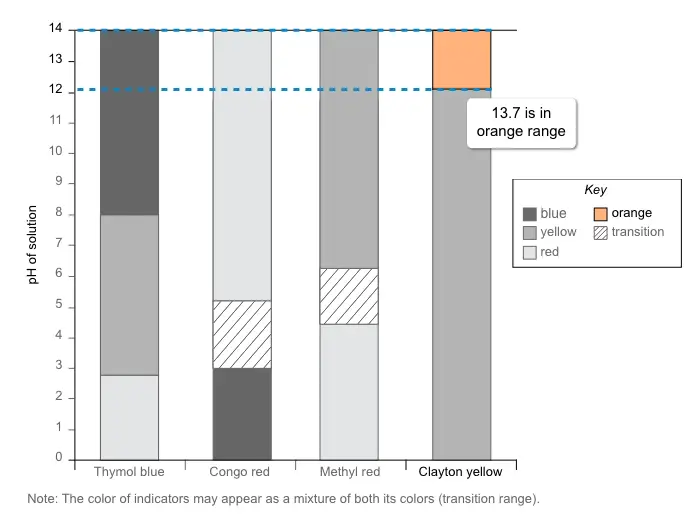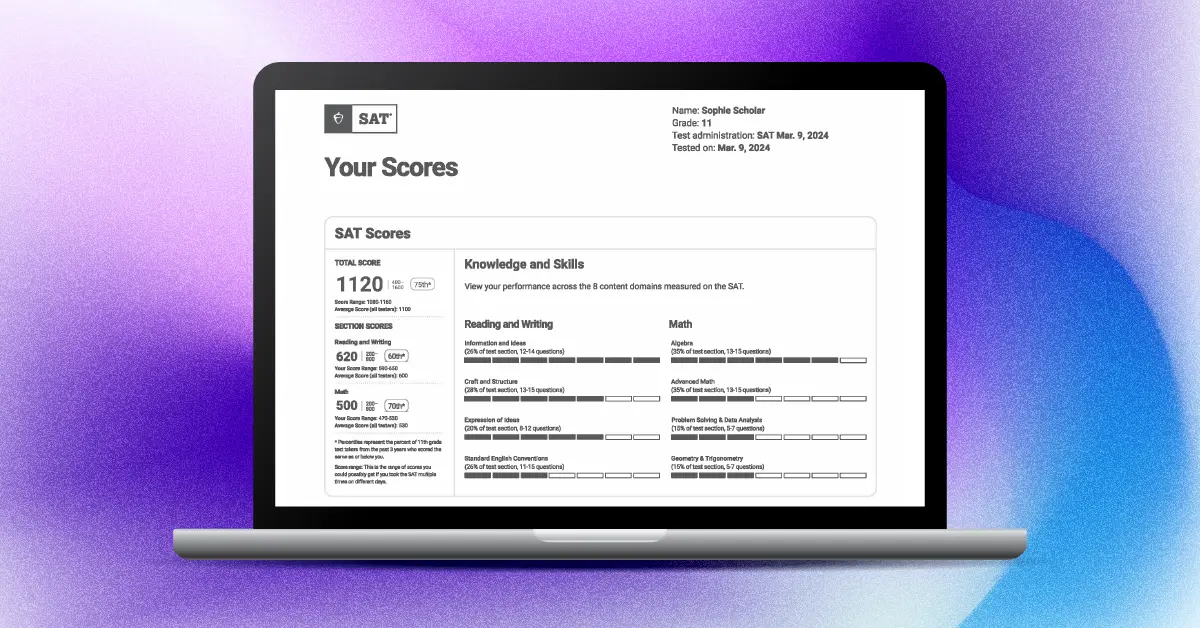Unlike the SAT®, the ACT® features a separate section devoted to science, known as the ACT Science section. Scoring high on ACT Science is important, if you’re planning to major in a STEM field. This section comprises 40 multiple-choice questions (MCQs) that are divided into 6 or 7 smaller passages. You have to analyze graphs, charts, and other data to arrive at conclusions about the prompts. Many students find this section challenging because of the way the subject matter is presented and tested.
You can overcome most of these challenges by avoiding a few common mistakes. So, let’s help you figure out the five most common mistakes students make on the ACT Science section and how to avoid them!
Top 5 Mistakes on ACT Science
2. Overlooking the important information in passage questions.
3. Focusing too much on irrelevant details.
4. Running out of time due to lack of time management.
5. Making preventable errors.
1. Misinterpreting Graphs and Charts
The ACT Science exam is recognized for featuring graphs that might appear unfamiliar or daunting. It’s typical for students to feel overwhelmed when confronted with complex graphs. Below, we’ve outlined some prevalent errors to avoid when addressing graphs and charts in the ACT Science section.
-
Not considering the context of the graphs
In a timed test, students often miss important details about the methodology or background information of the graphs that could affect their data interpretation. -
Misinterpreting the axis labels
Students often misread the labels on the x-axis or y-axis, leading them to make incorrect conclusions about the data. -
Not paying attention to units
ACT Science graphs and charts often display data in units, such as meters or seconds. -
Scrutinizing each data point
The ACT Science section often presents graphs and charts with many data points. One of the most common mistakes that students make is trying to interpret each data point instead of looking at the overall data trend or pattern. -
Ignoring trend lines or error bars
Many students miss out on important indicators the data displays in the context of trend lines or error bars.
Remember:
Data in graphs and charts is often presented in the context of an experiment or study. As you review the data presented, make sure to connect it with the descriptive information provided.
Remember:
The x-axis is the horizontal line on a graph, representing the independent variable, with values increasing from left to right. The y-axis is the vertical line, representing the dependent variable, with values increasing from bottom to top. Data points on the graph mark specific values, and understanding the scales, labels, and graph type is essential for accurate interpretation.
Remember:
Pay close attention to these units and use the correct ones when doing calculations or drawing conclusions.
Remember:
Unless you’re asked about a specific data point, you’re expected to draw conclusions about patterns and trends that the whole dataset indicates.
Remember:
Error bars can communicate uncertainty or variation in data sets as well as whether datasets indicate a sampling error. Trend lines show the prevailing direction of the data.
How to avoid mistakes on ACT graphs and charts
In order to fully prepare yourself for the graphs that you would encounter on the ACT test, be sure that you spend some time familiarizing yourself with practice tests that are realistic to the style level of difficulty that you will work with on the official ACT Science section. Additionally,
- Pay attention to the context of the graph and note the points/factors presented in the passages associated with the graph in question.
- Focus on analyzing the trends (increasing, decreasing, or no trend) in graphs and charts.
- Take note of the units of the values presented in the graphs. You might need to convert different units (like mm, cm or inch) using the metric system into one specific unit to calculate and derive your answer.
- Finally, remember to note the axis of the values you are examining. Doing this can prevent a lot of errors from occurring.
2. Not Reading the Questions or Passage Carefully
The ACT Science section presents you with a lot of information in a short amount of time. Students tend to skim through the ACT science question(s) passages, which can result in them missing out on a lot of crucial information. This can also lead to mistakes like:
- Misunderstanding the experiments being conducted
- Not identifying the chronological sequence of steps in an experiment
- Misjudging the variables being measured
- Not analyzing the overall purpose of the study
How to avoid this mistake: Active Reading
To avoid mistakes on ACT Science passages, you can follow the pointers below:
- Understand the “big picture” before answering the questions
- While the big picture helps, read everything and take notes on crucial details and underlining key information presented in the passage
- For “research summary” passages, focus on the variables, methodology, and purpose that impact the experiments and evaluate them
3. Focusing Too Much on Details
ACT science questions often contain extra information meant to test the student’s ability to identify and filter relevant information. Most students get overburdened with the information presented in the passages and tend to focus on each tiny detail. Not being able to filter relevant information can make students derive incorrect answers and also cause a waste of time.
How to avoid this mistake: Strategic Analysis
- Think strategically when analyzing information.
- Make sure that all the information you find relevant is correlated and gives meaning to the experiments discussed.
- In questions related to correlations, evaluate the variables and constants carefully. Make sure that each piece of information relates to the other relevant information provided.
- Learn to predict future trends based on the data given.
4. Running Out of Time
The ACT Science section is timed, and you have to answer 40 questions in 35 minutes. This means, it’s crucial to manage your time and not devote an excessive amount of time to any single question. In case you get stuck on a question, it is advisable to skip it and revisit it later if time permits.
How to avoid this mistake: Pace and Practice
If you’re afraid of running out of time and are wondering how you can manage your time better, try out the following tips below:
- Skim through the passage and graphs before you start answering the questions. This will help you get the big picture of the information presented in the passage.
- Don’t get overwhelmed with the amount of information provided. Retain relevant data by making notes and using a process of elimination.
- Don’t spend too much time on a question if you get stuck on it. Skip it to answer the other questions and come back later if you have time.
- Prioritize the questions and attempt the easier ones first, leaving the more challenging questions for later.
- Maintain your pace while answering the questions. If you spend too much time on any one question, you may run out of time for others.
- Remember to use the process of elimination and narrow down the possible answers. Doing this will help you save time and increase the accuracy of your answer.
- Last but not least, practice! Taking repeated practice tests with premium quality test prep materials will help you develop a better sense of pacing and time management. You can use UWorld’s timed ACT Science practice questions to help manage time effectively and gain confidence for test day.
5. Making Careless Mistakes
Careless mistakes like missing out on important information, not taking notes on units and variables are other components of the experiments can lead to wrongfully deduced answers. You can avoid these errors by reviewing your answers and the process through which you obtained them. Also, make sure that you have answered all the questions. There’s no penalty for guessing. So, never leave any question blank!
As you prepare for the ACT Science section, remember to master the fundamentals and take help from online test-prep materials. ACT Science is a crucial part of the ACT Test, and keeping this list of errors handy will help you review your practice test performance, so you can work on them and set yourself up for success. Happy prepping!





